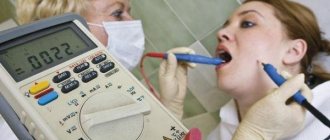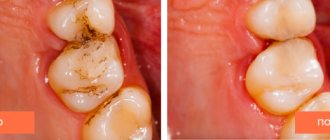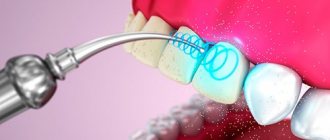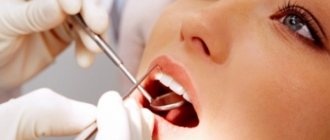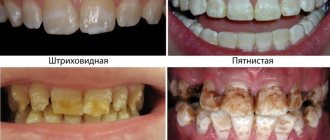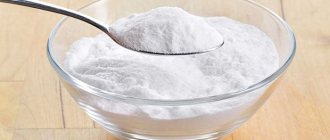How to treat stomatitis in the mouth at home - the best medicines and methods
Effective treatment of stomatitis at home is possible, but only with the use of modern drugs, freely sold through the pharmacy chain. It will not be possible to cope with the disease using folk methods alone, especially if the inflammation is in an advanced chronic form. To get rid of the disease, it is necessary first of all to determine the type of disease and establish the causes of the infectious-inflammatory process.
Why does stomatitis appear?
It is believed that stomatitis most often occurs in the mouth of a child. This is facilitated by the imperfect functioning of local immunity and the habit of putting foreign objects in the mouth. The oral mucosa in a child is vulnerable, sensitive, prone to inflammation, and the protective functions of saliva are not fully expressed, which also increases the risk of development. In most children, in the first years of life, viral childhood stomatitis (herpetic) is detected, which mainly affects infants.
In adults, the following forms occur:
- herpetic;
- aphthous;
- Vincent;
- prosthetic.
Most often, aphthous and herpetic stomatitis occur in adults. Treatment in adults largely depends on the type of disease and the severity of clinical manifestations.
The form must be determined by a dentist. Only a specialist can tell you exactly how to treat stomatitis at home without risks to health and teeth and with maximum efficiency.
Means used for carrying out
The whole variety of means that make it possible to carry out such a procedure can be divided into two large groups.
- The first includes only those that are based on the element fluorine. The bulk are special fluorine-containing varnishes that cover the enamel. In addition to them, there are also therapeutic and prophylactic pastes, which contain fluorine compounds in large doses, which are easily absorbed.
- The second group is fluorine-free drugs and materials. Most of their action is due to the content of one or more active calcium compounds. This element is the main one in the structure of enamel.
Usually all products are based on one or another element separately, since their combination can form specific salts that are harmful to teeth and can be destructive.
However, recently special gels have appeared that contain all the minerals necessary for teeth in a complex. The water component prevents them from forming compounds that have an adverse effect on the enamel.
- Calcium gluconate. To do this, use a 10% solution of the drug. It is applied using tampons to the surface of the teeth for 15–20 minutes. Be sure to do a thorough cleaning before doing this.
- Sodium fluoride. A solution of 0.5–2% concentration is used. Best used immediately after calcium gluconate. The duration of the procedure is about 5 minutes.
- Remodent. This drug contains sufficient amounts of calcium, chlorine, sodium, magnesium and other substances. A 1–3% solution is used in different cases.
Features of the treatment of different forms of stomatitis in adults
The disease has common manifestations: inflammation of the gums, hyperemia, the appearance of white or yellow plaque, ulcers, severe pain while eating, and bad breath. But treatment is always determined taking into account the nature of the disease.
Photo - ulcer on the lip
Herpetic form
Acute herpetic stomatitis lasts several weeks. It begins with a slight malaise and headaches, an increase in body temperature. Possible enlargement of regional lymph nodes. In the oral cavity, you can notice swollen and hyperemic mucosa.
Against the background of this clinical picture, after a few days, small bubbles appear in the area of the lips, cheeks and tongue, filled with cloudy or clear liquid. After a few more days, small erosions appear at the site of the vesicular rash, covered with a yellowish fibrin film. The gum tissue of teeth has a bright red tint. Rashes may also appear in the corners of the lips.
Video about what helps with stomatitis:
Medicines for stomatitis - TOP-11 drugs for treatment
How to treat herpes at home
Herpetic stomatitis appears due to an exacerbation of the herpes virus. For effective treatment, antiviral drugs are prescribed quickly, within the first 2-3 days from the onset of oral disease. They are especially effective until the bubbles begin to burst and turn into erosions.
Antiviral drugs in tablets allow you to have a systemic effect on the herpes virus. The drug should be selected by the attending physician. It is recommended to give preference to modern drugs, which include Famciclovir, Valavir and other drugs for stomatitis. The dosage of medications depends on the form and severity of symptoms of inflammation in the oral cavity.
Recently, dentists have been practicing single use of antiviral drugs in high dosages.
Tablets must be combined with local treatment at home. Effective for the herpetic form are applications with interferon (Viferon-gel), which increases the activity of the immune system and protects the mucous membrane from infectious pathogens. The gel is smeared onto the mouth and teeth, dried with a gauze swab, several times a day for a week. The drug can also be used in children.
Read our article for details about what medications and home remedies treat stomatitis in children.
For herpetic stomatitis, it is recommended to use immunostimulants ( Amiksin, Imudon ), which prevent frequent relapses. Additionally, it is necessary to take multivitamin complexes in courses. Frequent rinsing of the mouth and teeth is the key to a quick recovery. Miramistin solution can be used as an antiseptic.
Features of the treatment of aphthous stomatitis
A common cause of its appearance is damage to the sensitive mucous membrane from uneven and sharp edges of teeth and rough food. Aphthae resemble single ulcers that appear on the lips, cheeks, tongue, and oral cavity. The erosions have a round shape and a bright red rim.
Often, the aphthous type appears against the background of food and drug allergies, due to decreased immunity and the development of chronic liver diseases.
When treating aphthae at home, it is important to consider the likely causes of the disease. If the disease provokes an allergic reaction, antihistamines must be prescribed. Locally painful ulcers are treated with painkillers, antiseptic and anti-inflammatory agents:
- Cholisal-gel;
- Miramistin;
- Stomatofit-A.
In the first days from the onset of the disease, it is necessary to rinse the mouth and teeth with Miramistin as often as possible. After rinsing, be sure to treat the aphthae with Cholisal, an anesthetic gel with anti-inflammatory properties. You need to rinse the inflammation and smear the ulcers at least 4-5 times a day. Hydrogen peroxide will also help.
It is not recommended to self-medicate without consulting a doctor; only he knows how to treat stomatitis in the mouth without the risk of complications.
The chronic course of aphthous stomatitis requires a comprehensive examination of the oral cavity and digestive tract. Often, experts identify staphylococcus, which lives in carious lesions. To prevent recurrence of the inflammatory process, it is recommended to treat the affected teeth as soon as possible and remove soft and hard deposits on the enamel.
Treatment of Vincent's stomatitis at home
The ulcerative-necrotic form of stomatitis develops against the background of the active proliferation of pathogenic microorganisms and poor quality of oral care. The disease is promoted by weakened local immunity and bad habits, especially smoking.
Vincent is accompanied by an increase in body temperature, hyperemia and bleeding of the gums, dryness and the appearance of an unpleasant putrid odor from the mouth.
Brushing your teeth is impossible due to severe pain, which makes even light touches in the mouth impossible.
If stomatitis is not treated, it threatens to become chronic with sluggish manifestations.
Indications and contraindications for
This procedure is used both for prevention and for treatment when there is already any significant damage to the tooth enamel. Like any other medical event, it has a list of its own contraindications and indications.
However, simple preventive measures can be taken at home using less complex and affordable means without any restrictions.
Indications
- Plaque formation on the surface of teeth.
- Increased sensitivity of the teeth themselves and their rapid or accelerated wear.
- Increased sensitivity of periodontal tissues - gums.
- When carrying out a complete and comprehensive treatment of the oral cavity, which is called sanitation, remineralization is usually the final stage.
- Restoration of the surface shell of teeth after long-term wearing of various orthodontic and other dental structures.
- As a preventive measure, this procedure is recommended to be carried out twice a year for everyone who lives in poor environmental conditions.
- The initial stages of dental caries are white spots and darkening.
- Loss of natural shine of enamel.
Contraindications
There are very few factors that prohibit this procedure. However, they should still be listed.
- Personal intolerance, including the occurrence of allergic reactions to the drugs used.
- If so-called fluoridation is carried out, it is contraindicated for those people who suffer from thyroid diseases, osteoporosis, kidney failure and other problems for which fluoride preparations are not recommended by doctors.
Demineralization is the main indication for the procedure to saturate tooth enamel and dentin with calcium, fluorine, magnesium and phosphorus. With demineralization, teeth begin to react to cold, hot, sweet or salty foods. Painful sensations can occur even after eating if a person has forgotten to rinse his mouth to remove any leftover food.
The enamel quickly wears off and becomes thinner. Teeth stop shining and plaque quickly forms on them, which is difficult to clean off. The gums become inflamed and begin to bleed and hurt. Due to the gradual thinning of the enamel, carious cavities can form, and after some time the tooth will begin to decay.
Congenital hypersensitivity of teeth is also one of the indications for a remineralizing procedure. Remineralization of tooth enamel is indicated after the whitening procedure. Moreover, it is recommended to do it even in the absence of characteristic pain. The fact is that teeth whitening is carried out with special compounds that demineralize the enamel.
The remineralizing procedure is not suitable for everyone. Contraindications to this type of therapy include:
- individual intolerance to substances that are used to saturate dental tissues with microelements;
- diseases of internal organs for which the use of fluoride-containing drugs is contraindicated: pathologies of the pancreas, kidneys, diabetes mellitus;
- children's age - special, softer preparations are produced for remineralization of teeth in children.
The remineralizing procedure has a number of characteristic advantages, it:
- strengthens tooth enamel;
- regresses the development of caries in the early stages;
- helps whiten teeth several shades;
- protects enamel from exposure to various acids;
- ensures restoration of the microflora of the oral cavity.
Treatment of stomatitis at home using folk remedies
You can remove stomatitis yourself using folk remedies only with a mild form of the disease. The effectiveness depends on the regularity of rinsing with solutions with antiseptic properties. It is recommended to irrigate the oral mucosa at least 4-5 times a day.
Along with rinsing, some pathogenic microorganisms are removed, which helps reduce signs of the inflammatory process.
But before choosing folk remedies for home treatment, it is recommended to consult a doctor. Some recipes are potentially dangerous for teeth and mucous membranes, which are highly sensitive during illness. It is prohibited to use aggressive and concentrated formulations, especially garlic and onion infusions, and undiluted iodine. Such drugs further injure the oral cavity and intensify the symptoms of the inflammatory process.
Homemade ointment with novocaine
To cure stomatitis with ointment with anesthetic novocaine, you need to take a tablespoon of honey and olive oil, add egg whites and the contents of the novocaine ampoule. The finished product can be stored in the refrigerator for 2-3 days. It is necessary to treat the affected mucous membrane with ointment 3-4 times a day, combining this method with traditional methods (antiseptic solutions, gels). The product is also suitable for childhood stomatitis.
Applications of potatoes
Potatoes accelerate the regeneration of the mucous membrane. Grate the vegetable and mix with a little olive oil. It is recommended to keep the prepared pulp in the mouth for several minutes, and then rinse the mucous membrane with boiled water and treat the stomatitis with an antiseptic (Chlorhexidine).
Uses of aloe
At home, you can use aloe juice. But a plant that is at least 2-3 years old has medicinal properties. The leaves must be cut, washed, peeled and squeezed out the juice, which is used to rinse the mouth 3-4 times a day. You can simply hold the aloe pulp in your mouth for 2-3 minutes.
Calendula tincture against illness
Be sure to dilute the alcohol tincture with boiled water and rinse your mouth with it as often as possible. It has an anti-inflammatory effect, especially effective against fungal infections. Take 15-20 drops of alcohol tincture per glass of boiled water.
Application of soda
Soda has a detrimental effect on many infectious pathogens. In terms of effectiveness, it stands next to other folk remedies. It can be used for home treatment of stomatitis, but only as part of complex therapy. In a glass of boiled warm water, you need to dissolve 2 tablespoons of soda, stir and rinse your mouth with the prepared mixture several times a day.
Types and techniques of the procedure
At its core, remineralization is simply a process by which tissues are saturated with essential microelements.
Natural
Throughout life, the body must independently regulate the renewal of all tissues. The same thing happens with enamel. In a healthy person who follows the rules of hygiene and has a strong immune system, the process of remineralization (saturation with minerals) should occur in a completely natural way.
The loss of these substances is often associated with their lack in the body. Since a person gets everything he needs with food, the conclusion suggests itself - a proper nutritional system and a nutritious diet are the basis for natural remineralization.
In addition, any diseases of the gastrointestinal tract should be excluded. Indeed, because of them, among other things, the acidity in the oral cavity may increase, which will negatively affect the enamel.
Artificial
If the body’s strength is not enough to replenish the loss of microelements on its own, an artificial method is used. It is carried out using various chemical compounds that coat the surface of the teeth. It is from them that the missing substances are supplied.
Many tools and materials have been developed to carry out this procedure. Some of them are adapted only for professional conditions and specific equipment that is available in modern dental clinics. Some can be used at home.
There are two types of remineralization of tooth enamel – natural and artificial. A natural way to saturate enamel with microelements involves changing your diet so that all useful substances enter the body with food. In this case, people begin to consume the following products:
- cheese;
- milk;
- greenery;
- cottage cheese;
- vegetables;
- nuts;
- legumes
Natural remineralization lasts a very long time, but its effect does not go away quickly. With continued adherence to your diet, your teeth will always be strong and healthy.
An artificial method that allows you to remineralize teeth involves the use of special preparations: gels, caps, varnishes with calcium, fluoride and other microelements. Strengthening solutions are used to treat the tooth surface, as a result of which all microcracks in the enamel are filled.
Natural remineralization is suitable for those who are allergic to fluoride products. To restore enamel using this method, you need to eat the following for a month:
- fresh natural cottage cheese with a fat content of more than 5%;
- thermally processed sea fish;
- protein-rich meat;
- hard cheeses;
- pasteurized milk with a fat content of 3.2%.
All food products consumed must be natural, so it is better to purchase them not in a store, but at the market or from familiar farmers.
In parallel with natural products, you can consume vitamin and mineral complexes. It is better to choose drugs with a high calcium content that are most suitable for the patient’s age. To saturate the body with iron, you can use hematogen or special vitamins.
During the period of natural remotherapy, you should not consume sugar. The only sweets allowed for consumption are unheated honey and fruit.
Mineralization of tooth enamel is a paid procedure that is not provided within the framework of compulsory medical insurance (compulsory health insurance), so it can be carried out both in a commercial clinic and in a self-supporting department of a budget clinic. The procedure is inexpensive, its exact cost depends on the institution where the session is performed, the number of teeth being treated and their actual condition.
Remotherapy takes place in several stages:
- Preparing the enamel for the procedure: cleaning from plaque, applying special abrasives, professional teeth cleaning with ultrasound.
- Application of calcium gluconate solution to the treated surface.
- Application of a mineralizing solution of sodium fluoride (2 or 4%) or putting on a mouth guard with a medicinal composition.
- The use of electrophoresis with remineralizing agents. Electrophoresis is used in particularly advanced cases so that medicinal compounds penetrate into the deep layers of enamel and dentin.
Each person can carry out the procedure to saturate tooth enamel with microelements on their own at home, but before doing so, they should consult a doctor. The dentist will recommend the best drugs for remineralization, and will also indicate the exact time during which treatment should be carried out.
Carrying out in the clinic
This happens in several stages, which may vary slightly depending on the materials used.
- Preparatory procedures. The specialist conducts a thorough examination of the entire oral cavity and teeth. After this, be sure to have it professionally cleaned. It includes complete removal of plaque and tartar, if they are on the surface. This is necessary, since plaque contains many bacteria that can have a destructive effect even though they are already under a special coating. After cleaning, the surface must be thoroughly dried.
- The next stage is direct remineralization. The doctor applies one of several possible materials to the enamel (fluorine varnish, which is called “artificial enamel,” chemicals with magnesium and calcium fluorides).
- If a calcium-magnesium complex is used, then after drying again, the teeth must be coated with another composition - calcium-copper hydroxide. This substance promotes the breakdown of fluorides into microcrystals, and, as a result, easier penetration into the dense structure of the enamel.
The described procedure is called deep fluoridation. It is used when damage is already quite noticeable on the surface of the teeth and the active development of caries begins.
This method allows you not only to get rid of damage, but also to prevent its recurrence. That is why it is considered not only a therapeutic, but also a preventive method.
